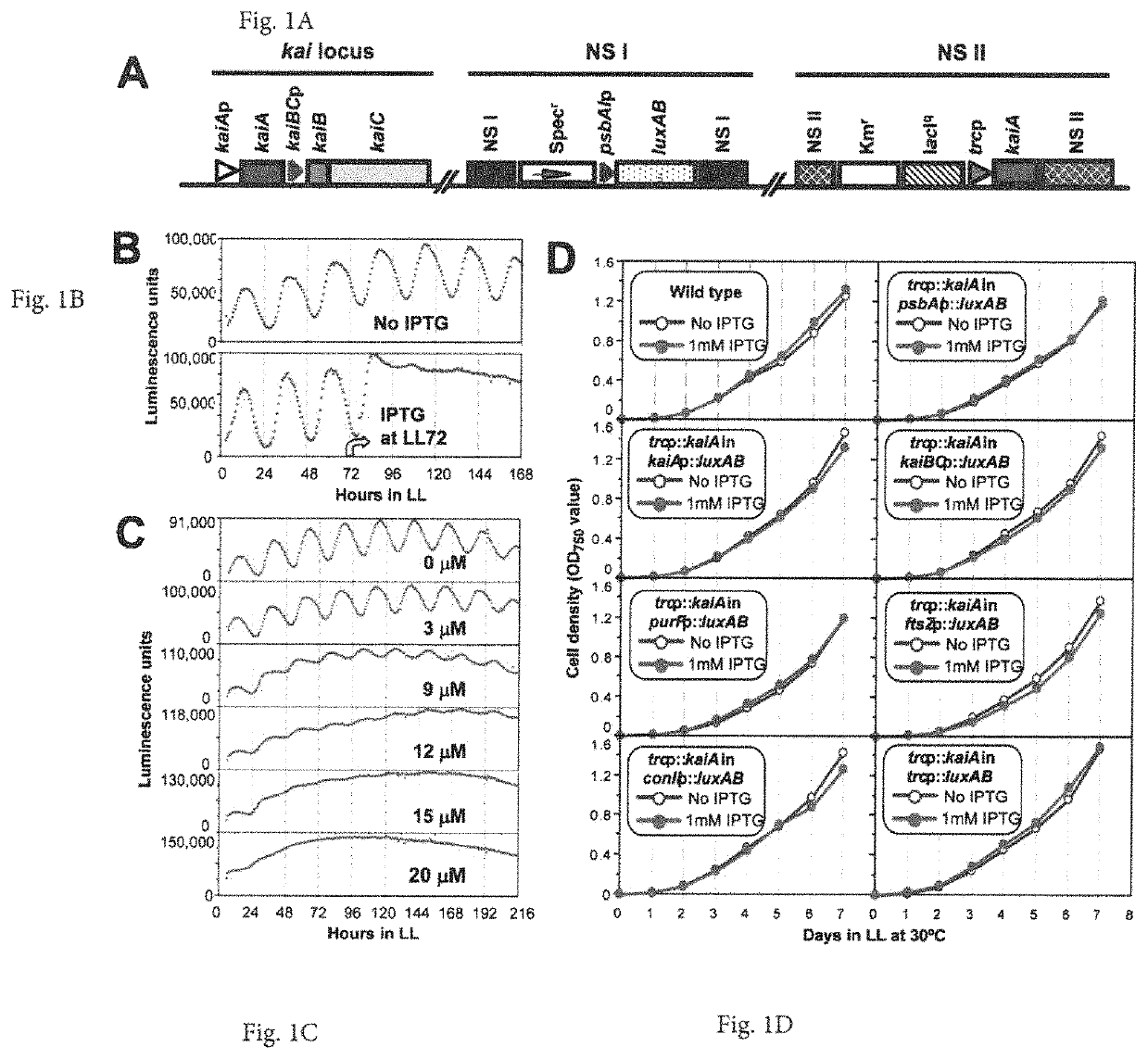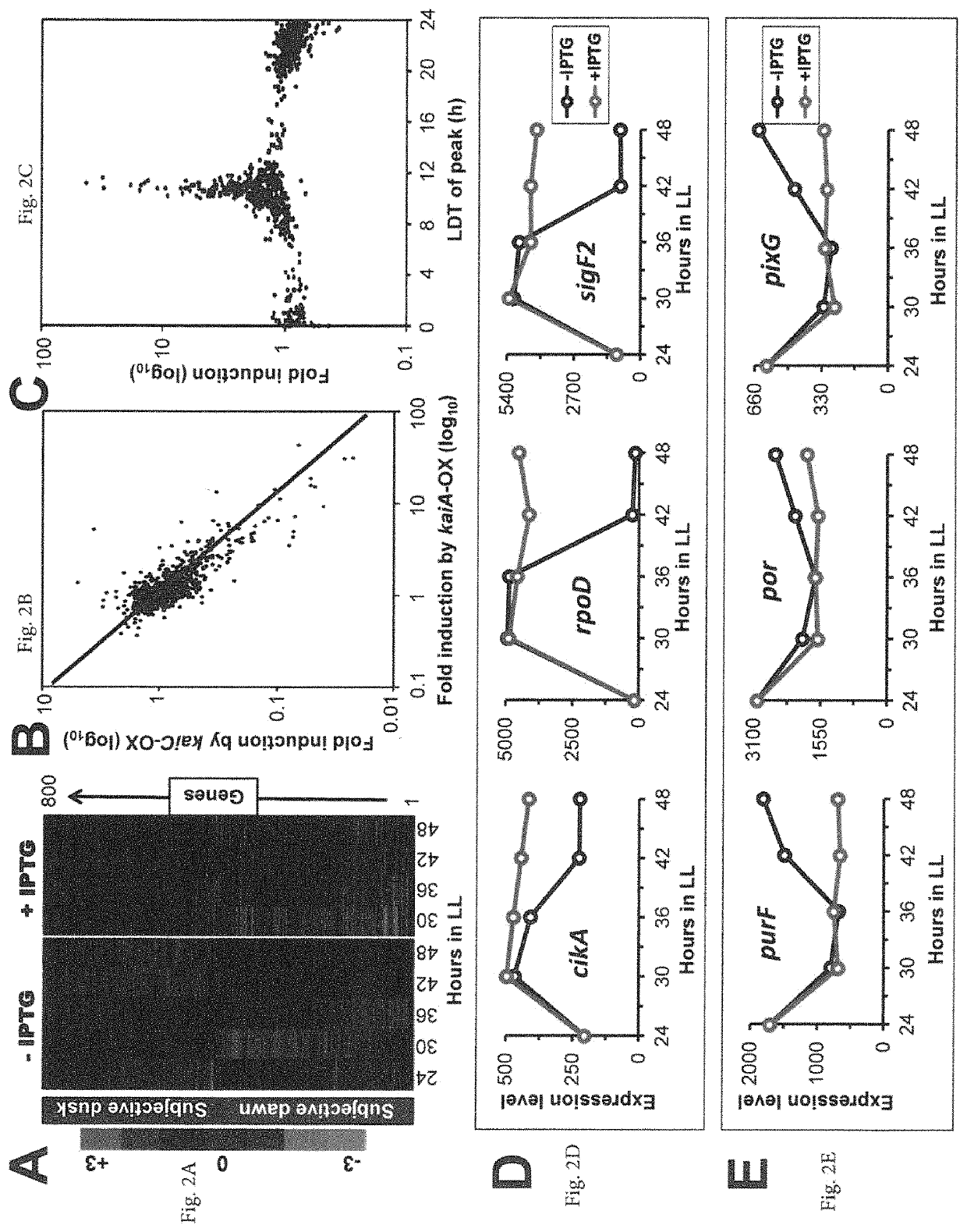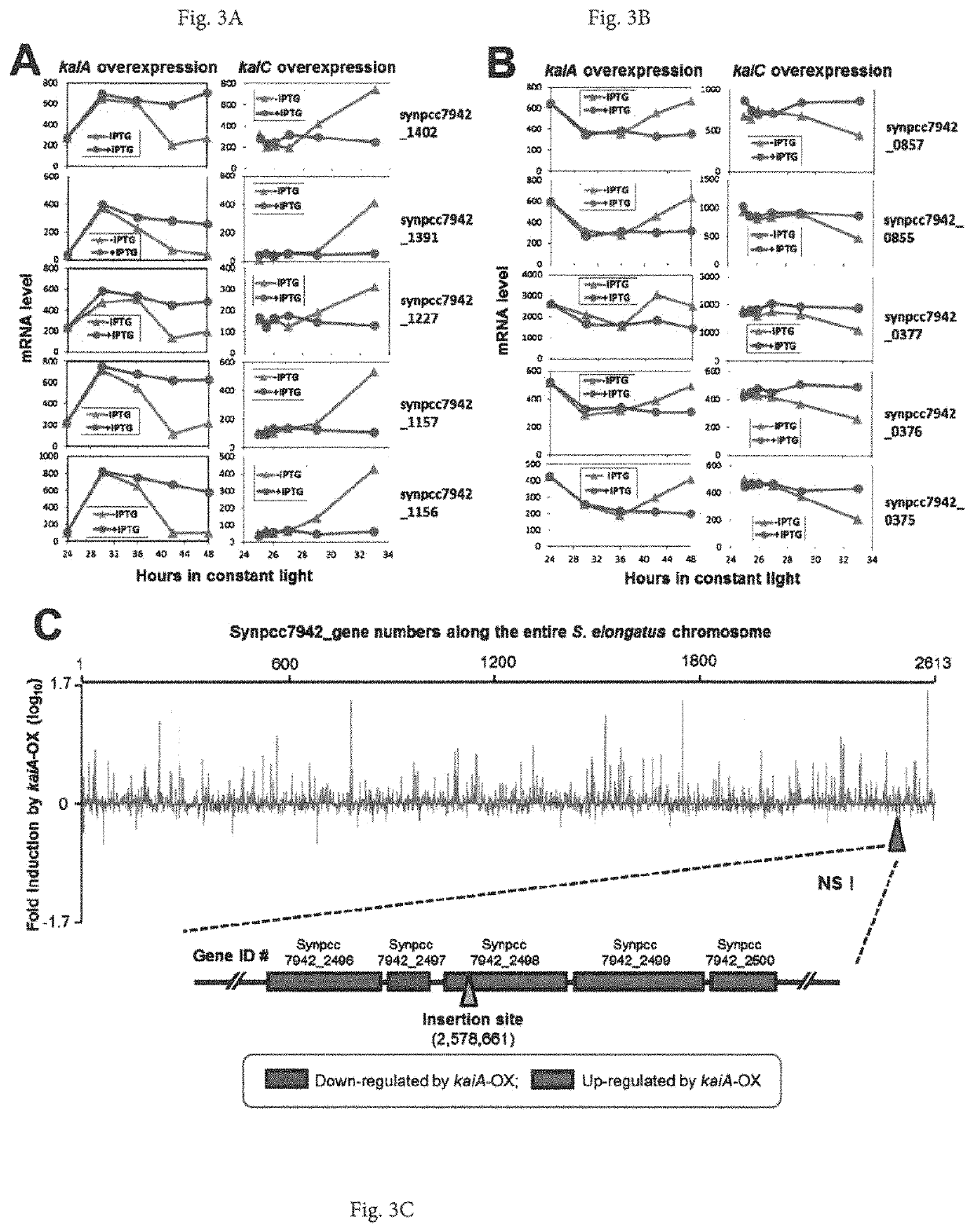Manipulating the circadian clock to increase gene expression
a technology of gene expression and circadian clock, which is applied in the direction of bacteria peptides, hormone peptides, peptide sources, etc., can solve the problems of low efficiency of heterologous expression achieved by cyanobacteria for industrial application, and few tools are available to reprogram metabolic flux in photosynthetic microorganisms, so as to increase gene expression, increase the expression of a target gene, and enhance the expression of endogenous and foreign genes
- Summary
- Abstract
- Description
- Claims
- Application Information
AI Technical Summary
Problems solved by technology
Method used
Image
Examples
example 1
Circadian Yin-Yang Regulation and its Manipulation to Globally Reprogram Gene Expression
[0085]The cyanobacterial circadian program exerts genome-wide control of gene expression. KaiC undergoes rhythms of phosphorylation that are regulated by interactions with KaiA and KaiB. The phosphorylation status of KaiC is thought to mediate global transcription via output factors SasA, CikA, LabA, RpaA, and RpaB. Overexpression of kaiC has been reported to globally repress gene expression.
[0086]The inventors show that the positive circadian component KaiA upregulates “subjective dusk” genes and its overexpression de-activates rhythmic gene expression without significantly affecting growth rates in constant light. The global patterns of expression that are regulated by KaiA versus KaiC were analyzed, and it was found, in contrast to the previous report of KaiC repression, that there is a “Yin-Yang” regulation of gene expression whereby kaiA overexpression activates “dusk genes” and represses “d...
example 2
Further Studies of Circadian Regulation Involving a Double KaiC Mutation and ΔCikA Knockout
[0114]Additional work was carried out to demonstration the effect of mutation of clock genes or clock-related genes on gene expression. FIG. 13 shows that in addition to overexpression of the positive clock component KaiA, manipulation of mutant versions of the negative component KaiC also constantly enhances gene expression (in this case, the mutant versions KaiC / A422V / H423N (SEQ ID NO: 12) and KaiC / EE (SEQ ID NO: 13)). Besides experimental manipulation of central clock genes such as KaiA and KaiC, FIG. 14 illustrates that manipulation of other clock-related genes can result in constant high expression of reporter gene even without any induction or special treatment. In this particular example, it is the deletion of an input pathway gene of the circadian system, called cikA (SEQ ID NO: 14), that results in constant high expression of the output gene.
[0115]The complete disclosure of all patent...
PUM
| Property | Measurement | Unit |
|---|---|---|
| OD | aaaaa | aaaaa |
| optical density | aaaaa | aaaaa |
| pH | aaaaa | aaaaa |
Abstract
Description
Claims
Application Information
 Login to view more
Login to view more - R&D Engineer
- R&D Manager
- IP Professional
- Industry Leading Data Capabilities
- Powerful AI technology
- Patent DNA Extraction
Browse by: Latest US Patents, China's latest patents, Technical Efficacy Thesaurus, Application Domain, Technology Topic.
© 2024 PatSnap. All rights reserved.Legal|Privacy policy|Modern Slavery Act Transparency Statement|Sitemap



